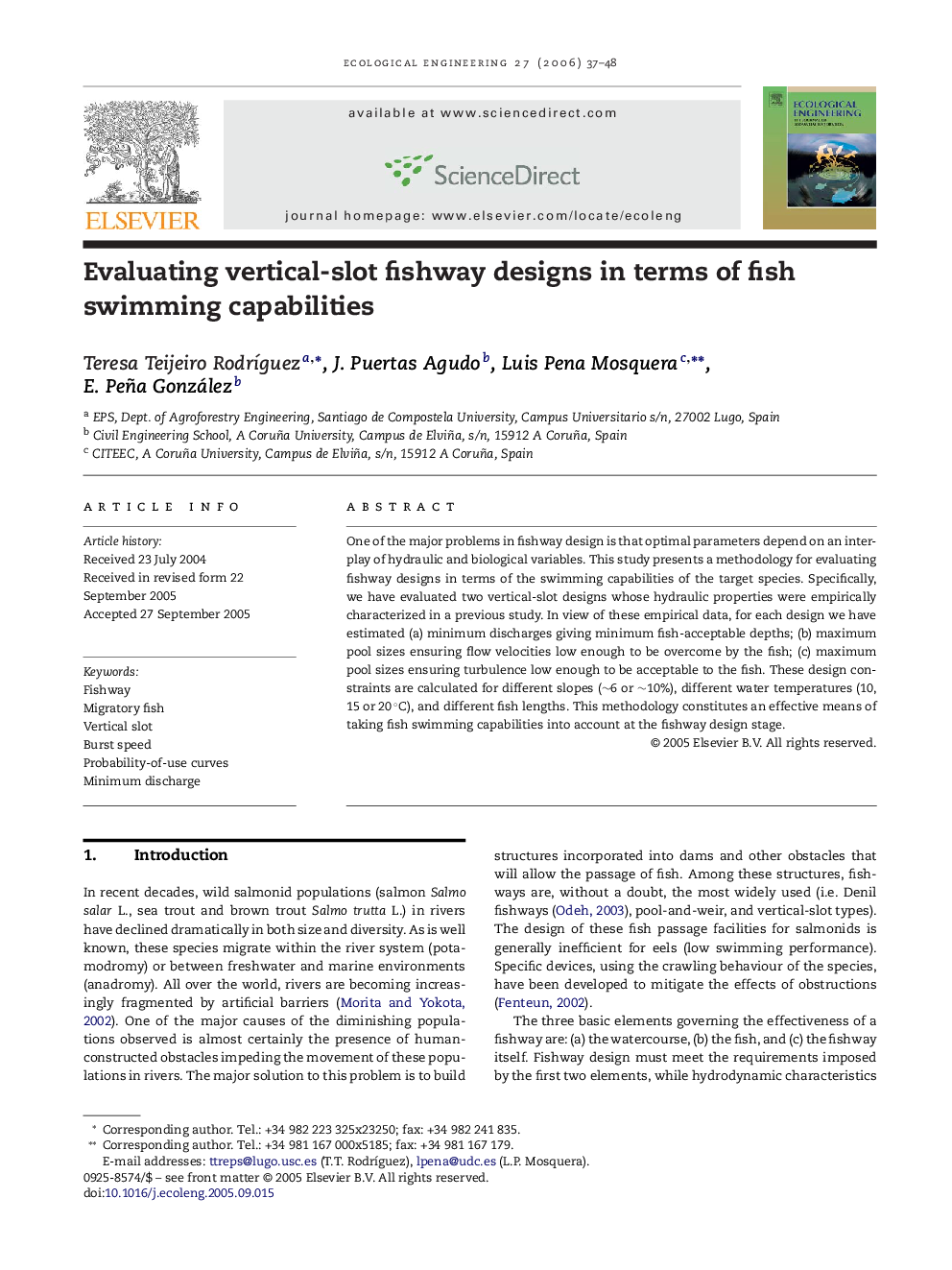| Article ID | Journal | Published Year | Pages | File Type |
|---|---|---|---|---|
| 4391316 | Ecological Engineering | 2006 | 12 Pages |
Abstract
One of the major problems in fishway design is that optimal parameters depend on an interplay of hydraulic and biological variables. This study presents a methodology for evaluating fishway designs in terms of the swimming capabilities of the target species. Specifically, we have evaluated two vertical-slot designs whose hydraulic properties were empirically characterized in a previous study. In view of these empirical data, for each design we have estimated (a) minimum discharges giving minimum fish-acceptable depths; (b) maximum pool sizes ensuring flow velocities low enough to be overcome by the fish; (c) maximum pool sizes ensuring turbulence low enough to be acceptable to the fish. These design constraints are calculated for different slopes (â¼6 or â¼10%), different water temperatures (10, 15 or 20 °C), and different fish lengths. This methodology constitutes an effective means of taking fish swimming capabilities into account at the fishway design stage.
Keywords
Related Topics
Life Sciences
Agricultural and Biological Sciences
Ecology, Evolution, Behavior and Systematics
Authors
Teresa Teijeiro RodrÃguez, J. Puertas Agudo, Luis Pena Mosquera, E. Peña González,
